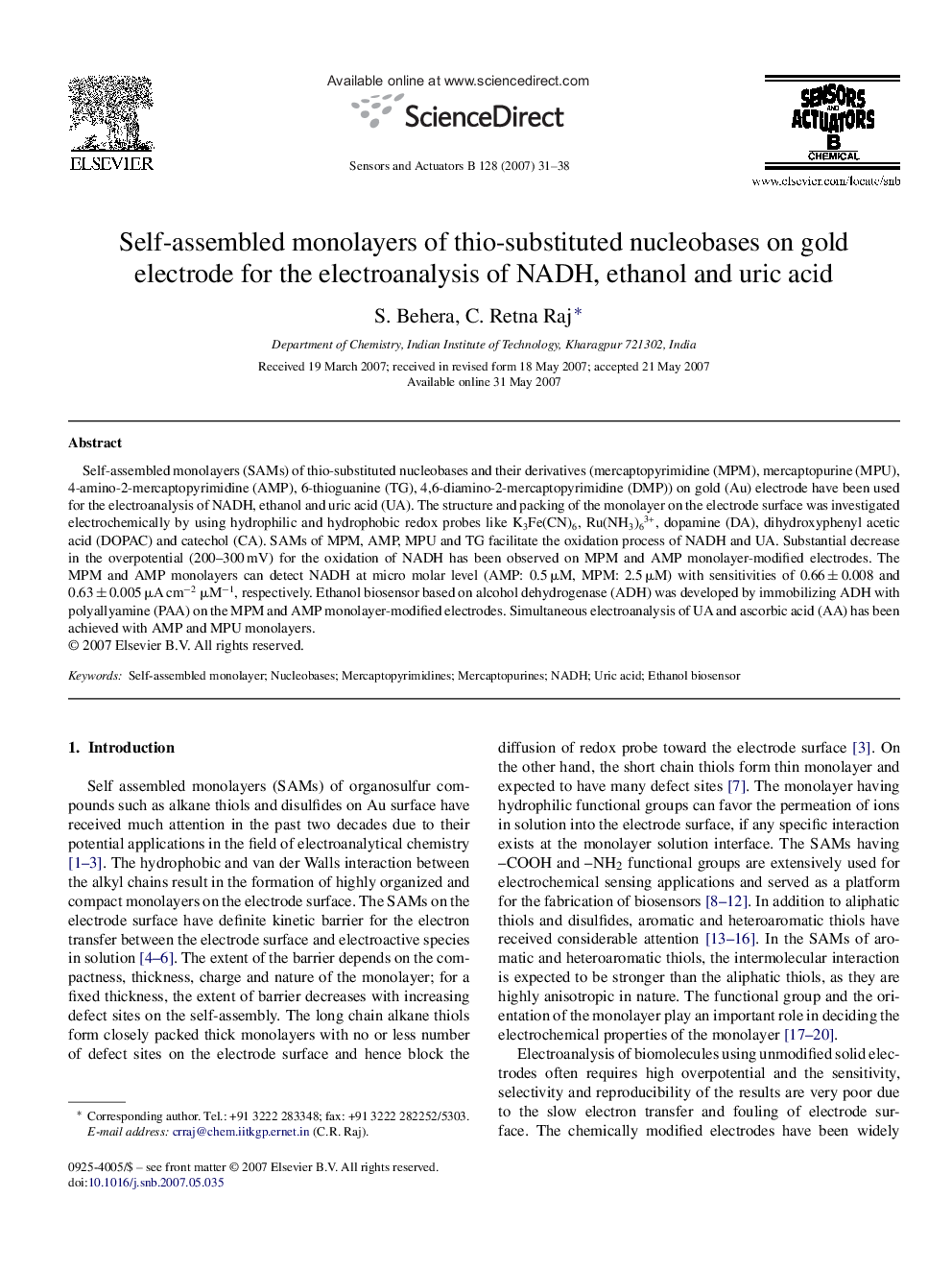| Article ID | Journal | Published Year | Pages | File Type |
|---|---|---|---|---|
| 744474 | Sensors and Actuators B: Chemical | 2007 | 8 Pages |
Self-assembled monolayers (SAMs) of thio-substituted nucleobases and their derivatives (mercaptopyrimidine (MPM), mercaptopurine (MPU), 4-amino-2-mercaptopyrimidine (AMP), 6-thioguanine (TG), 4,6-diamino-2-mercaptopyrimidine (DMP)) on gold (Au) electrode have been used for the electroanalysis of NADH, ethanol and uric acid (UA). The structure and packing of the monolayer on the electrode surface was investigated electrochemically by using hydrophilic and hydrophobic redox probes like K3Fe(CN)6, Ru(NH3)63+, dopamine (DA), dihydroxyphenyl acetic acid (DOPAC) and catechol (CA). SAMs of MPM, AMP, MPU and TG facilitate the oxidation process of NADH and UA. Substantial decrease in the overpotential (200–300 mV) for the oxidation of NADH has been observed on MPM and AMP monolayer-modified electrodes. The MPM and AMP monolayers can detect NADH at micro molar level (AMP: 0.5 μM, MPM: 2.5 μM) with sensitivities of 0.66 ± 0.008 and 0.63 ± 0.005 μA cm−2 μM−1, respectively. Ethanol biosensor based on alcohol dehydrogenase (ADH) was developed by immobilizing ADH with polyallyamine (PAA) on the MPM and AMP monolayer-modified electrodes. Simultaneous electroanalysis of UA and ascorbic acid (AA) has been achieved with AMP and MPU monolayers.
